
by Shannon Lambie and Naomi Wittes Reichstein
On wrapping the five-year, $110-million At Home/Chez Soi landmark pilot project, the Mental Health Commission of Canada concluded in 2014 that “Housing First rapidly ends homelessness.”
Now, with Canada’s new 10-year National Housing Strategy, cities have the opportunity to play revitalized roles in approaching this ongoing crisis. Since the time of At Home/Chez Soi, organizations across Canada have been adopting the principles of Housing First. This philosophy focuses on moving people into permanent housing as quickly as possible, then providing them with the services they require to maintain it. The foundational idea is that housing needs to occur first, because supports are likelier to succeed if a person has a stable place to live. The client then receives assistance toward education, employment, social integration, and physical and mental health including substance recovery.
Housing First offers more choice in housing and services than traditional approaches generally offer. Clients receive case management, but services are generally optional, and maintaining sobriety isn’t typically required for receiving accommodation under Housing First.
Nearly five years have passed since At Home/Chez Soi released its findings, and Housing First implementations have existed in the U.S. and elsewhere since the late 1980s. We wanted to explore how providers have adapted Housing First into flexible models of supportive housing serving different groups of clients. How have providers in various contexts adapted the model to their own specific circumstances on the ground? What can their experiences tell us about how to meet the evolving needs of tenants over time as they move out of homelessness?
Seeking to learn from programs that have tailored novel applications of Housing First to distinct groups of clients, we talked to four providers located in four cities in three countries. Each organization has fine-tuned its programming to specific clientele. From the experiences they reported, we’ve identified 12 lessons about applying Housing First to addressing homelessness effectively.
Profiling the providers
DESC, leader of Housing First in Seattle region
Internationally known for services to the homeless, DESC pioneered Housing First in the Seattle region, providing permanent supportive housing alongside emergency shelter and survival services. DESC focuses on clients with severe, persistent mental illness; chronic substance use disorders; and/or other complex medical problems. DESC has influenced the field in creating the Vulnerability Assessment Tool (VAT), a widely used measure for identifying high-need tenants for Housing First. DESC houses clients on a large scale in both scattered (individual) and congregate (single) housing sites.
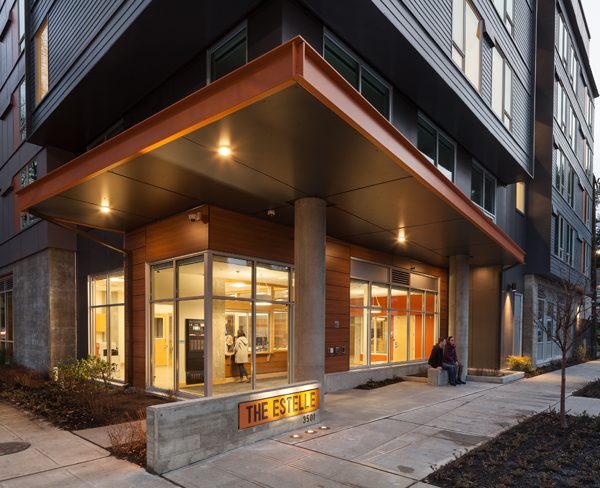
Nikihk Aboriginal Housing First: Indigenous-focused housing in Edmonton
Nikihk is a Housing First project administered by the Bent Arrow Traditional Healing Society in partnership with Homeward Trust. Through Nikihk, Bent Arrow provides culturally relevant services to urban Indigenous people in Edmonton by helping them secure safe, affordable, supportive and permanent housing. Nikihk means “home” in Cree. Initiated in 1994, Bent Arrow strives to fill a gap in programming for children and families through traditional Indigenous values and teachings. In addition to managing Nikihk, Bent Arrow offers youth employment programs and comprehensive family services to supported referrals, as well as soup and bannock lunches.
Esbjerg, Denmark adapts Housing First for youth
Denmark has one of Europe’s largest Housing First programs, and this approach forms the country’s standard for addressing homelessness. Starting in 2009, the municipality of Esbjerg developed an unusual adaptation for youth in which the city enters into a three-way partnership with housing associations that provide permanent scattered-site accommodations and a volunteer-based NGO that offers supports. (In Denmark, housing associations are a standard model for providing apartment building accommodations to the general population.) Esbjerg is the only city that has adapted Housing First in this way for youth.
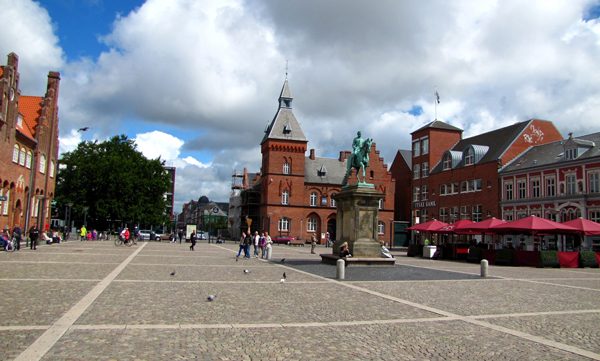
Catholic Charities introduces Kenton Women’s Village to Portland, Oregon
Kenton Women’s Village is a women-focused Housing First project operated by Catholic Charities in conjunction with Prosper Portland, the urban renewal agency of Oregon’s largest city. Designed to help women bridge the gap between chronic homelessness and permanent housing, the village contains 14 “sleeping pods” (8’ x 12’), which are like tiny houses except that they don’t have their own kitchens or bathrooms.
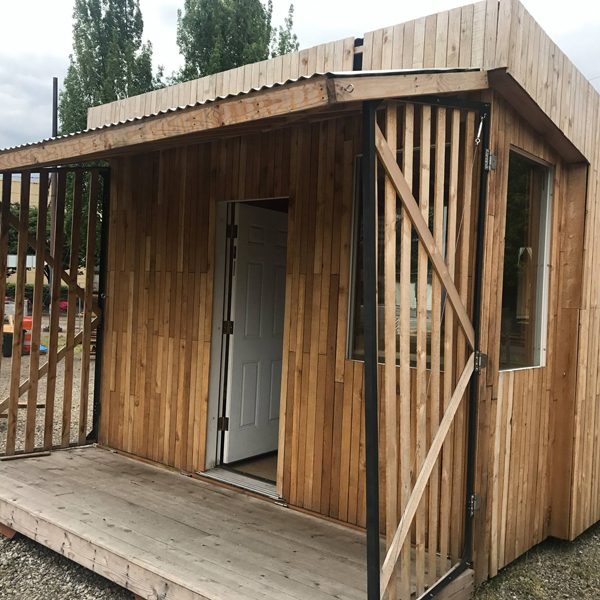
The village has a kitchen and showers housed in a shipping container, as well as heated outdoor seating, a fire pit, a community garden, and a pod where the village manages donations from the community. It’s located on a site in North Portland’s Kenton neighbourhood owned by Prosper Portland. The land will eventually be developed into a brick-and-mortar housing project. Making use of the space in the interim, the pods were designed by Portland State University architecture students. In addition to case workers, the village has a partnership with the University of Portland School of Nursing, whose students support the village with practicum hours twice a week.
What we learned
1. Single versus scattered sites
To the extent possible, many Housing First providers consider it an important principle to offer clients a choice between living together in congregate (single) sites versus on their own (in scattered sites). Housing clients on a large scale in both scattered and single sites, Seattle’s DESC offers valuable perspectives on the tradeoffs between these two very different solutions.
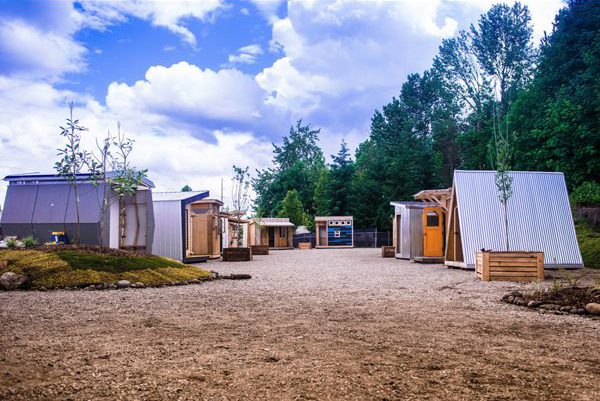
The vast majority of DESC’s scattered sites are in market rental apartment buildings, and DESC has staff dedicated to finding rentals. According to executive director Daniel Malone, scattered sites can seem normal to many clients. A single site (a building specifically dedicated for the program) can make some people feel segregated, and clients can be reluctant to live with others who have mental illness. Other clients, however, appreciate the community and 24-hour staff available in single sites. Scattered sites can work well for clients who are well engaged in care and able to manage apartments but less well for those who do not thrive in social isolation.

Financial tradeoffs exist as well. Relative to scattered sites, single sites can be more expensive in affordable real-estate markets but less costly in inflationary ones. In an affordable market, the scattered-site approach can also be implemented much faster as the housing is already available. Given Seattle’s overheated rents, however, scattered sites have become the much more expensive option, difficult to find and often in undesirable locations or of poor quality. In this context, single sites offer the economic stability of reserving housing for the most vulnerable. Malone explains that DESC develops and owns its single-site housing, with contractual requirements to continue its operation for this special population for at least 50 years.
2. Overcoming NIMBYism
In siting accommodations for the homeless, municipalities and agencies face persistent problems with community resistance. Creating relationships with landlords and employers by hiring dedicated staff to engage with them can help build bridges, including for mentally ill clients. Providers report success when taking time at the beginning of projects to work with neighbours, organizations or universities, as Kenton Women’s Village has done in fostering collaborations with Portland State University architecture students and the University of Portland School of Nursing.
With regard to engaging the surrounding neighbourhood, coordinator Trell Anderson explains that the charity organized its original approach around treating the village as a pilot project. Pre-engagement was key. The charity posed such questions to the neighbours as: “What are the village rules? How does it operate? Should we put together a good neighbour agreement? How would you like it staffed? What are some of the goals of the village other than moving women from homelessness?” Ultimately, as Anderson describes it, the charity conveyed the message “We won’t do this unless you all want us here.” Anderson feels that this approach to input encouraged community members to become invested in the project. He hopes that Kenton’s success will make future projects easier via a ripple effect: “The strategy is really about setting up more sleeping pod villages in more neighbourhoods … Keep the villages small, engage in the neighbourhoods, manage the heck out of them so they’re really not the problem that everybody thinks they’re going to be, sign neighbourhood agreements, work with police, engage your mental health community providers and make sure that you’re transitioning women at a positive supportive rate so that you have good stories to tell.” Documenting outcomes, he says, is very important for enabling future projects.
3. Low-barrier intake
Providers have different ways of simplifying intake for vulnerable clients. In Denmark, Esbjerg holds an informal one-hour initial conversation with youth. For its part, DESC created the VAT as an objective measure to reduce interview burdens on high-need clients. As Malone puts it, DESC is strongly committed to “basically accepting people as they are in whatever condition they’re in and not insisting they be different.”
4. Flexible, dynamic programming
Changing services year to year in response to evolving client needs can help improve outcomes. Over six years of operation, a clear takeaway at Nikihk is that the work and program are constantly evolving. Program manager Lovette Ferguson reports trying multiple ways of engaging with clients: “If we don’t see a lot of success, then we switch it up, and one of the things that we changed this year was implementing a crisis team, and that’s putting the spiritual and the trauma workers together.”
5. Culture
Grounding services in cultural relevance can be particularly helpful. At Nikihk, Ferguson says that “awareness of where you come from and getting back to your roots is a really good foundation for being able to move forward.” This approach has helped Indigenous clients find stability in addressing addiction and use culture as a means of healing. Since there is no single identity representing all Indigenous groups, it is helpful for there to be a “community navigator who is aware of traditional processes and existing relationships within a broad range of Aboriginal nations and communities.”
6. Temporary sites
For temporary sites, Kenton’s novel sleeping pod approach has produced a number of instructive lessons. While the individual design of each pod makes the village attractively eclectic, it also creates maintenance challenges. Anderson comments that “every pod is different, which is cute but in terms of pod maintenance is kind of a nightmare because nothing is the same. No two pods are the same, no two doors are the same, no two hinges are the same, no two screws are the same. They’re all insulated differently. So some pods are warmer than others.” This lack of standardization also makes relocating pods a challenge, as they weren’t built to be moved as often as they have been, and each requires slightly different care when being moved. As a result, keeping them habitable has cost more than expected. With sleeping pod or tiny house sites, standardization helps significantly to contain maintenance costs.
7. Serving homeless youth
Identifying clients, including youth, whose homelessness may not be apparent is a serious challenge. In Esbjerg, project leader Lise Würsching observes, “We don’t have young people that sleep in the streets. You cannot see this problem in our municipality.” Homeless youth in Esbjerg often stay with family or friends for four to five years until they’ve exhausted their networks. Also, the prevalence of girls has surprised the program’s managers. In contrast to the expected 80/20 male-to-female ratio among the homeless, Esbjerg’s youth participants are almost at 50/50. Although they don’t typically consider themselves to be sex workers, in reality the great majority of the young women entering the program have been staying with older men to whom they supply services. Würsching says that Esbjerg “doesn’t have street prostitutes in our community, but a lot of them [are] prostituting themselves,” describing their predicament as “a hidden problem.” Thus cities should be aware that the proportion of homeless girls may be higher than recognized, and that they can be vulnerable to sexual exploitation. Developing youth-focused homeless counts could be instrumental in finding hidden homeless young people. Esbjerg’s program has demonstrated that early identification can be immensely valuable in moving youth onto educational or occupational paths to prevent them from becoming chronically homeless.
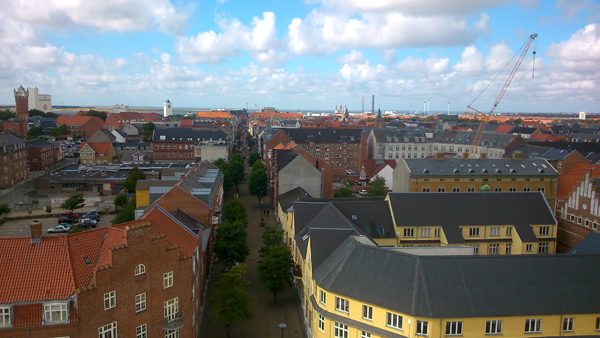
8. Volunteer/Donation coordination
Nonprofit providers may find that communities respond to housing projects with more volunteerism and donations than expected. In Kenton, a large volume of donations began arriving from the community to support the pod village, and the charity responded by creating a new role for a villager to sort, clean and organize goods. Engaging the community in volunteerism can also help accelerate integration and positive reception.
9. Opiate crisis
As Malone of DESC reports, the opiate crisis has greatly increased the frequency of accidental deaths and major health crises requiring emergency intervention. For providers, this can mean increased demand on supportive housing staff to respond to life-threatening events and a shift in substance-use treatment from a principally counselling-oriented focus toward one that includes frequent lifesaving. DESC ensures that people have Naloxone and that clients are clear with staff about the kinds of support they need.
10. Social enterprises
Social enterprises such as secondhand retail can both generate revenue for nonprofit providers and offer affordable items for furnishing clients’ homes. Nikihk is funded through the Province of Alberta via Homeward Trust. Homeward Trust receives municipal, provincial and federal funding and operates FIND. An income-generating social enterprise, FIND is a large used furniture store generating approximately $50,000 monthly. Homeward Trust estimates a cost per client of $15,000–$20,000 for the first year of Housing First, including housing, support and rental assistance.
11. Staying in single-site housing after recovery
Conventional belief holds that recovery from addiction warrants a change in friends and environment, but the reality may be more complex. As Malone of DESC reports, some clients who achieve long-term recovery prefer moving out of single-site housing where substance users live. Others opt to stay within these communities and are still able to avoid using. When DESC’s clients achieve sobriety for a long time, occasionally they express a wish to live away from temptation, and in this situation DESC tries to find alternative arrangements. Interestingly, though, Malone reports that this is the exception. The majority of clients who no longer use prefer to remain living in DESC’s facilities because their communities are there. Some even report that living near others who use helps encourage them to avoid doing so themselves. To the extent practicable, the approach should be client-specific.
12. Continuing supports
Clients vary widely in their need for supports after formal case management has ended. Some achieve independence; others need ongoing support to maintain stability. Providers can explore partnerships with volunteer organizations or other nonprofits to continue supports. The city of Esbjerg contracts with an NGO called De Hjemløses Venner (Friends of the Homeless), staffed 100% by volunteers who provide support services with caseloads of seven to eight youths per volunteer. After the formal six-month period with the city finishes, De Hjemløses Venner can continue to help clients build their networks and pursue interests.
***
The authors presented their research on Housing First at the Pacific Housing Research Network symposium at the Housing Central Conference in Vancouver on November 18, 2018.
***
Shannon Lambie, MA holds a Master of Community and Regional Planning (MCRP) degree from the UBC School of Community and Regional Planning (SCARP). She works as a Regional Planner at the Provincial Agricultural Land Commission.
Naomi Wittes Reichstein specializes in urban planning, research and advocacy relating to the public realm, sustainability, open space and affordable housing. She holds a Master of Community and Regional Planning (MCRP) degree from the UBC School of Community and Regional Planning (SCARP). As a Greenest City Scholar, she designed a study at the Vancouver Board of Parks and Recreation on the use of Vancouver’s parks for outdoor environmental learning. As a Sustainability Scholar, she worked at UBC’s Centre for Community Engaged Learning to evaluate its Community Resilience Framework. She is the Arbutus Greenway Project Lead at the Vancouver Public Space Network. With a background in publishing and communications, she has worked as Editor-in-Chief at Business in Vancouver (BIV) Magazines and as Editor at Raincoast Books.




